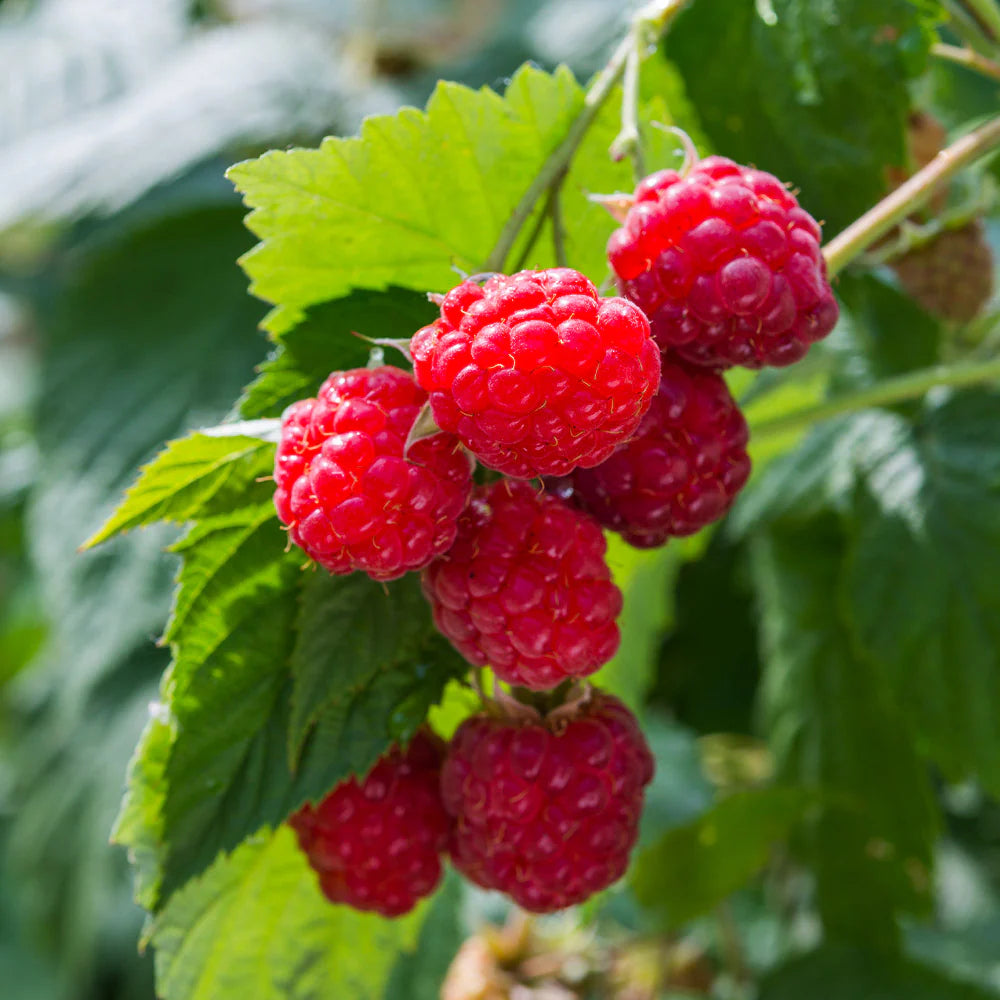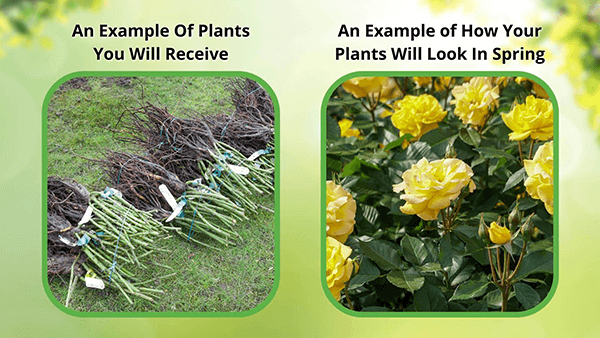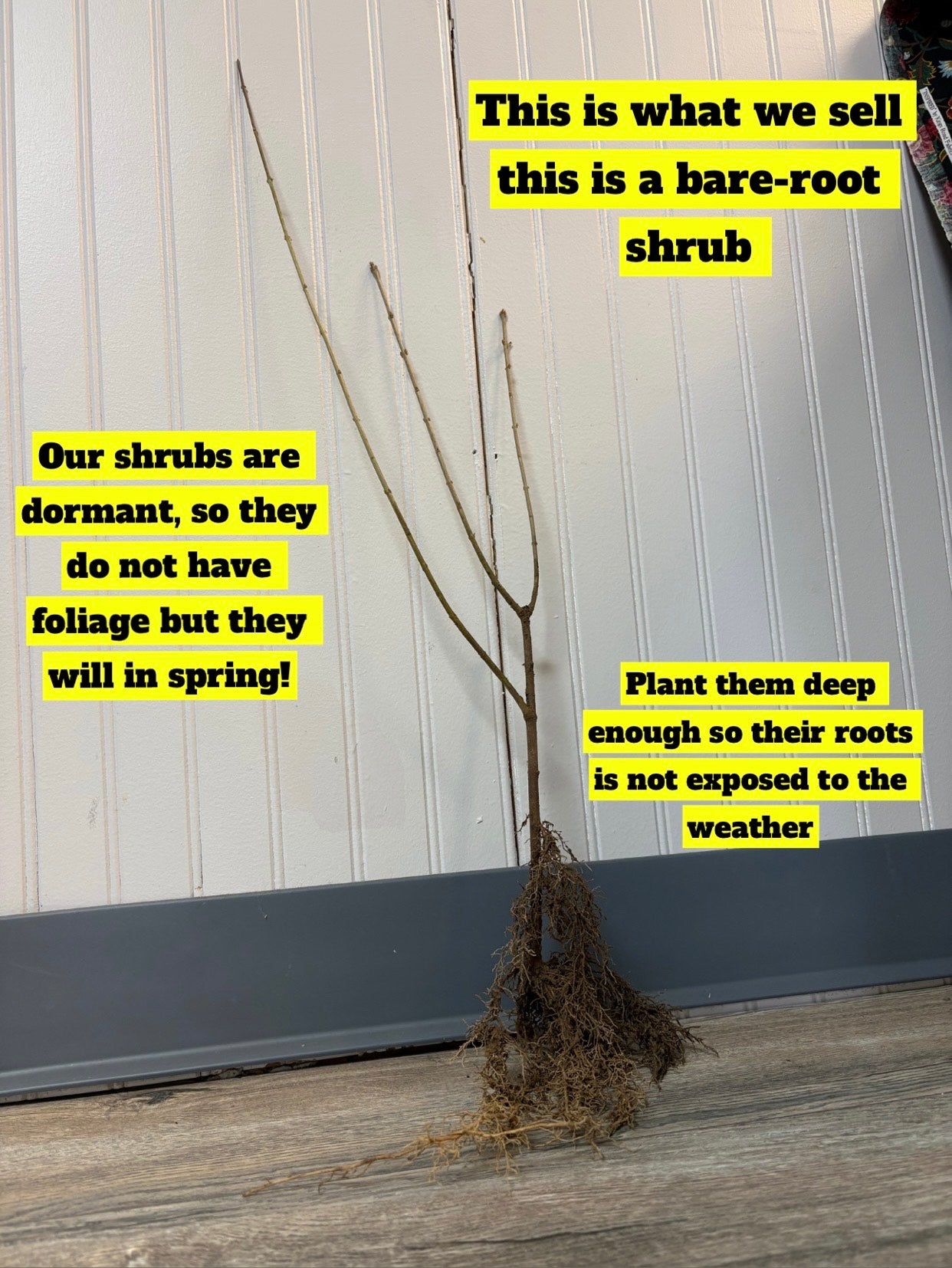Red Raspberry Bushes for Sale - Rubus Idaeus
Red Raspberry Bush (Rubus idaeus var. strigosus) is a deciduous, perennial shrub that is native to many regions of North America. In a natural environment, this plant grows in a variety of ecosystems such as ravines, heaths, open woodlands, and along well-drained stream banks.
The leaves are bright green and typically consist of 3-5 pinnately arranged leaflets. In the autumn, the canes will defoliate and remain bare until the following spring. Flowers bloom in the spring and are very attractive to pollinators. They are simple yet beautiful bright white, and consist of five petals.
Red Raspberry Plant Details
Family: Rosaceae
Hardiness Zones: 3 - 7
Light Requirement: Full sun for optimal fruit production
Water Needs: Moderate to high
Height: 3 - 6 ft
Spread: 3 - 4 ft
Growth Rate: Fast
Bloom Time: Late spring to early summer
Flower Color: White to pale pink
Wildlife Value: Flowers attract pollinators, berries are a favorite of birds, mammals, and humans
Once pollinated, beautiful, bright red berries develop in the summer. Not only are the berries attractive, but they are quite delicious when eaten. However, you will have to fight the wildlife to get your fair share! While this shrub is perennial, the fruit-bearing canes are biennial and will only produce for two seasons.
The American Red Raspberry Bush is distinct from its relative, the European Raspberry (native to Eurasia), with the most notable differences being its glandular hairs that blanket young stems and peeling bark on mature canes. Interestingly, glandular hairs are known to deter pests as they produce toxic compounds at the hair tip. These hairs also play a role in attracting pollinators by releasing enticing essential oils.
Landscape Uses and Maintenance of Red Raspberry Plant
This delightful shrub can be susceptible to pests and diseases such as the raspberry cane borer or fusarium wilt. However, they are robust and usually easy to grow when planted in the right environment. It prefers slightly acidic, rich, moist, and well-drained soils. Wet soils are not ideal for this plant and can lead to root rot. Full sun will yield the best harvest from this plant however, it will grow well in partial shade.
This plant spreads via sucker. To prevent spreading, be sure to prune suckers before they have time to fully establish. If left to grow unhindered, this shrub will spread to form dense thickets.
Noteworthy Characteristic of Red Raspberry Plant
Easy to grow, edible fruit, attractive to wildlife
If you would like to add an edible and attractive element to your garden scape, plant this shrub and enjoy its delicious, bright red berries year after year. Shop for Red Raspberry Bush shrub online at TN Nursery. For 68 years, we have served the landscaping industry and homeowners with specimen plants.
Exposure
Black Raspberry plants thrive in full sun, requiring at least 6-8 hours of natural sunlight everyday for optimal growth and fruit production. They can tolerate partial shade, but total sun exposure ensures healthier plants and higher yields of flavorful berries.
Height at Maturity
Under 10 Feet
Usage
Berry
Shipped As
Bare-root
Ships
UPS
Planting Zones
4-9


